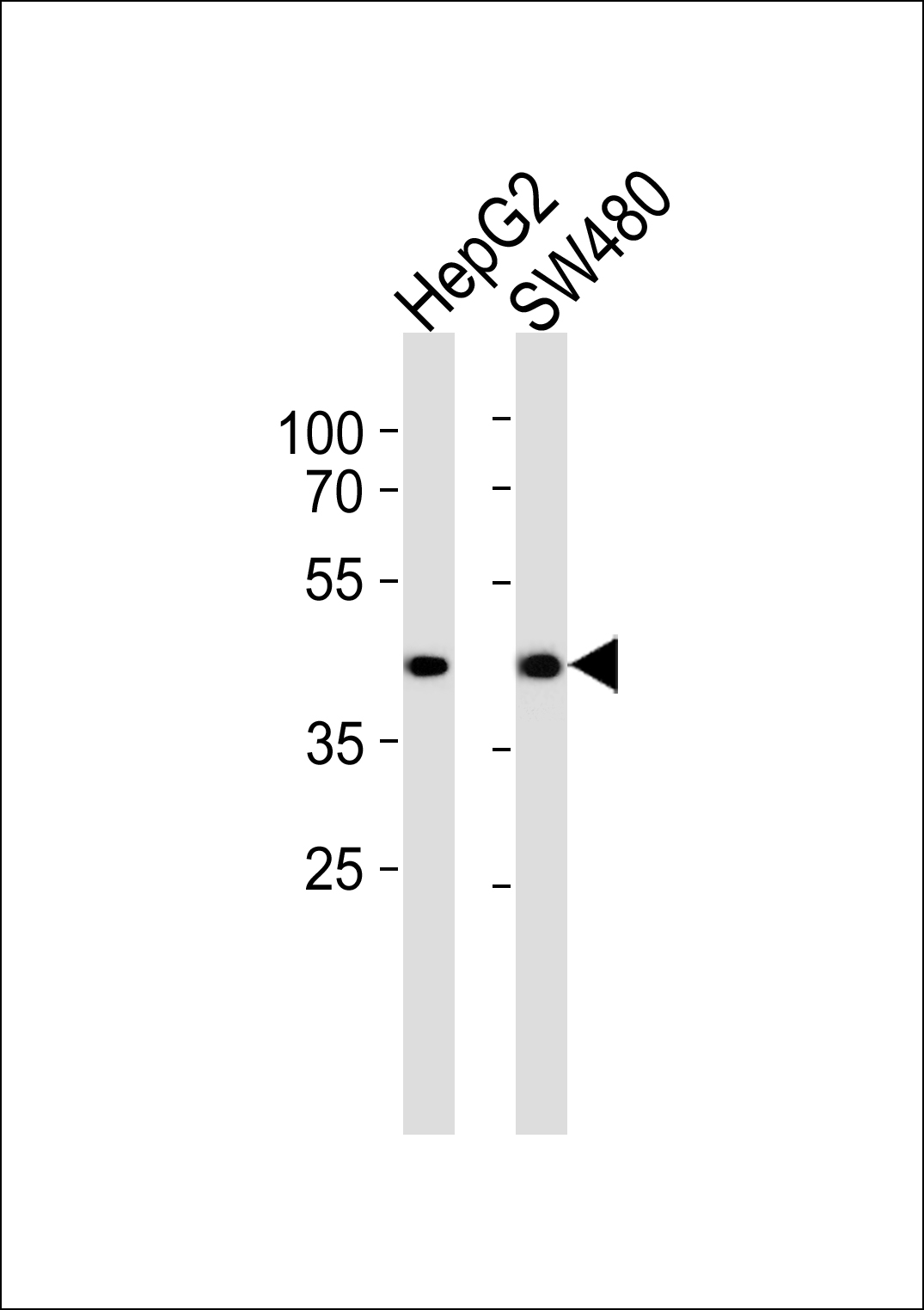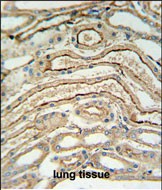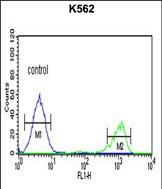ADH7 Antibody (C-Term)
Affinity Purified Rabbit Polyclonal Antibody (Pab)
- 产品详情
- 实验流程
- 背景知识
Application
| IHC-P, FC, IF, WB, E |
|---|---|
| Primary Accession | P40394 |
| Reactivity | Human, Rat, Mouse |
| Host | Rabbit |
| Clonality | Polyclonal |
| Isotype | Rabbit IgG |
| Calculated MW | 41481 Da |
| Antigen Region | 318-346 aa |
| Gene ID | 131 |
|---|---|
| Other Names | Alcohol dehydrogenase class 4 mu/sigma chain, Alcohol dehydrogenase class IV mu/sigma chain, Gastric alcohol dehydrogenase, Retinol dehydrogenase, ADH7 |
| Target/Specificity | This ADH7 antibody is generated from rabbits immunized with a KLH conjugated synthetic peptide between 318-346 amino acids from the C-terminal region of human ADH7. |
| Dilution | IHC-P~~1:100~500 FC~~1:10~50 IF~~1:10~50 WB~~1:1000 E~~Use at an assay dependent concentration. |
| Format | Purified polyclonal antibody supplied in PBS with 0.09% (W/V) sodium azide. This antibody is purified through a protein A column, followed by peptide affinity purification. |
| Storage | Maintain refrigerated at 2-8°C for up to 2 weeks. For long term storage store at -20°C in small aliquots to prevent freeze-thaw cycles. |
| Precautions | ADH7 Antibody (C-Term) is for research use only and not for use in diagnostic or therapeutic procedures. |
| Name | ADH7 (HGNC:256) |
|---|---|
| Function | Catalyzes the NAD-dependent oxidation of all-trans-retinol, alcohol, and omega-hydroxy fatty acids and their derivatives (PubMed:15369820, PubMed:16787387, PubMed:9600267). Oxidizes preferentially all trans-retinol, all-trans-4-hydroxyretinol, 9-cis- retinol, 2-hexenol, and long chain omega-hydroxy fatty acids such as juniperic acid (PubMed:15369820, PubMed:16787387, PubMed:9600267). In vitro can also catalyze the NADH-dependent reduction of all-trans- retinal and aldehydes and their derivatives (PubMed:15369820, PubMed:16787387, PubMed:9600267). Reduces preferentially all trans- retinal, all-trans-4-oxoretinal and hexanal (PubMed:15369820, PubMed:16787387). Catalyzes in the oxidative direction with higher efficiency (PubMed:15369820, PubMed:16787387). Therefore may participate in retinoid metabolism, fatty acid omega-oxidation, and elimination of cytotoxic aldehydes produced by lipid peroxidation (PubMed:15369820, PubMed:16787387, PubMed:9600267). |
| Cellular Location | Cytoplasm. |
| Tissue Location | Preferentially expressed in stomach. |
For Research Use Only. Not For Use In Diagnostic Procedures.
Provided below are standard protocols that you may find useful for product applications.
BACKGROUND
This gene encodes class IV alcohol dehydrogenase 7 mu or sigma subunit, which is a member of the alcohol dehydrogenase family. Members of this family metabolize a wide variety of substrates, including ethanol, retinol, other aliphatic alcohols, hydroxysteroids, and lipid peroxidation products. The enzyme encoded by this gene is inefficient in ethanol oxidation, but is the most active as a retinol dehydrogenase; thus it may participate in the synthesis of retinoic acid, a hormone important for cellular differentiation. The expression of this gene is much more abundant in stomach than liver, thus differing from the other known gene family members.
REFERENCES
Kedishvili, N.Y., et al. J. Biol. Chem. 270(8):3625-3630(1995)
Cheung, B., et al. Alcohol. Clin. Exp. Res. 19(1):185-186(1995)
Farres, J., et al. Eur. J. Biochem. 224(2):549-557(1994)
Pares, X., et al. FEBS Lett. 303(1):69-72(1992)
终于等到您。ABCEPTA(百远生物)抗体产品。
点击下方“我要评价 ”按钮提交您的反馈信息,您的反馈和评价是我们最宝贵的财富之一,
我们将在1-3个工作日内处理您的反馈信息。
如有疑问,联系:0512-88856768 tech-china@abcepta.com.























 癌症的基本特征包括细胞增殖、血管生成、迁移、凋亡逃避机制和细胞永生等。找到癌症发生过程中这些通路的关键标记物和对应的抗体用于检测至关重要。
癌症的基本特征包括细胞增殖、血管生成、迁移、凋亡逃避机制和细胞永生等。找到癌症发生过程中这些通路的关键标记物和对应的抗体用于检测至关重要。 为您推荐一个泛素化位点预测神器——泛素化分析工具,可以为您的蛋白的泛素化位点作出预测和评分。
为您推荐一个泛素化位点预测神器——泛素化分析工具,可以为您的蛋白的泛素化位点作出预测和评分。 细胞自噬受体图形绘图工具为你的蛋白的细胞受体结合位点作出预测和评分,识别结合到自噬通路中的蛋白是非常重要的,便于让我们理解自噬在正常生理、病理过程中的作用,如发育、细胞分化、神经退化性疾病、压力条件下、感染和癌症。
细胞自噬受体图形绘图工具为你的蛋白的细胞受体结合位点作出预测和评分,识别结合到自噬通路中的蛋白是非常重要的,便于让我们理解自噬在正常生理、病理过程中的作用,如发育、细胞分化、神经退化性疾病、压力条件下、感染和癌症。









